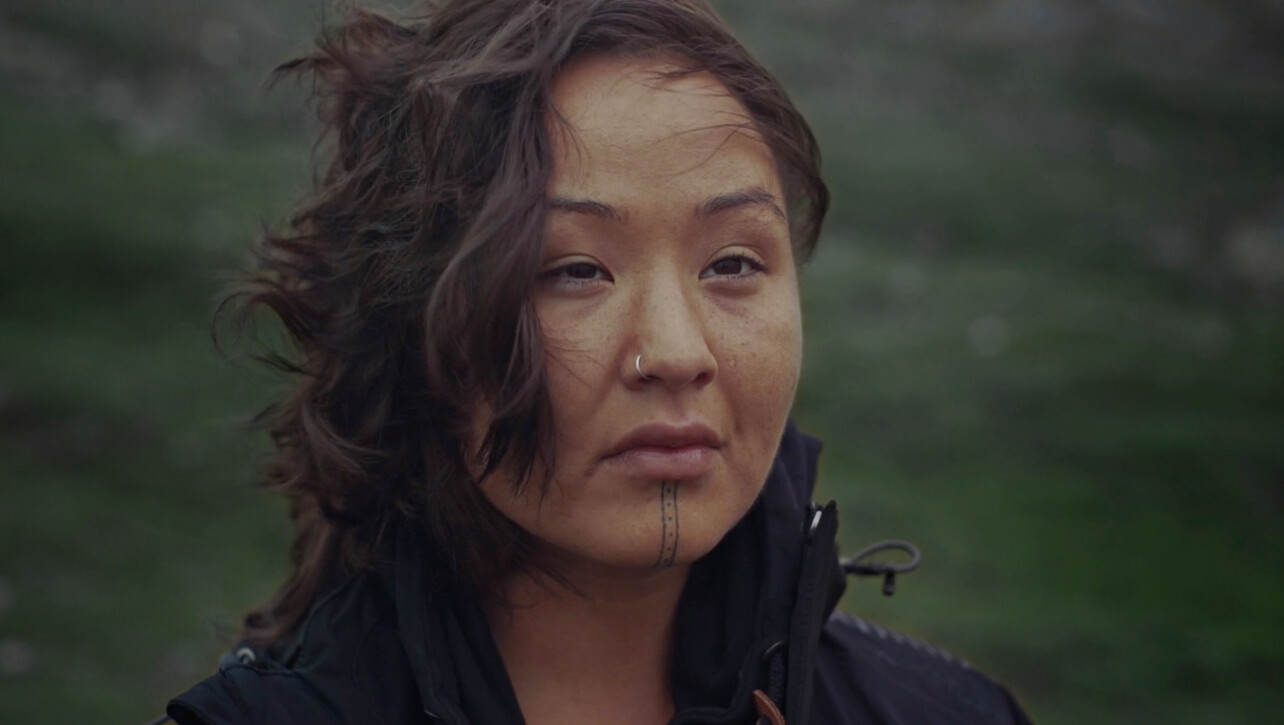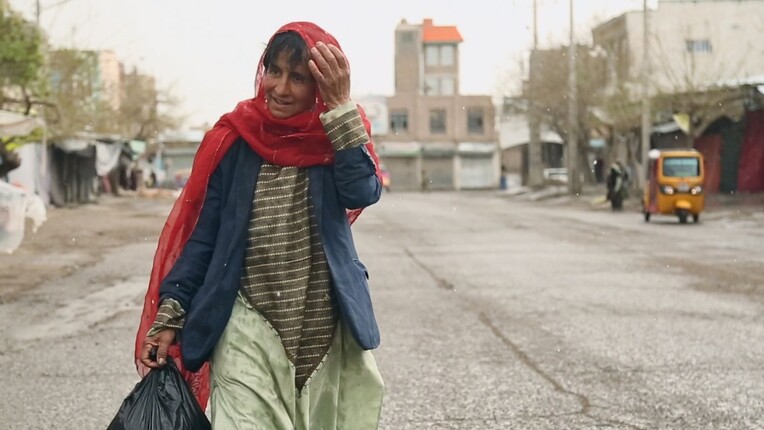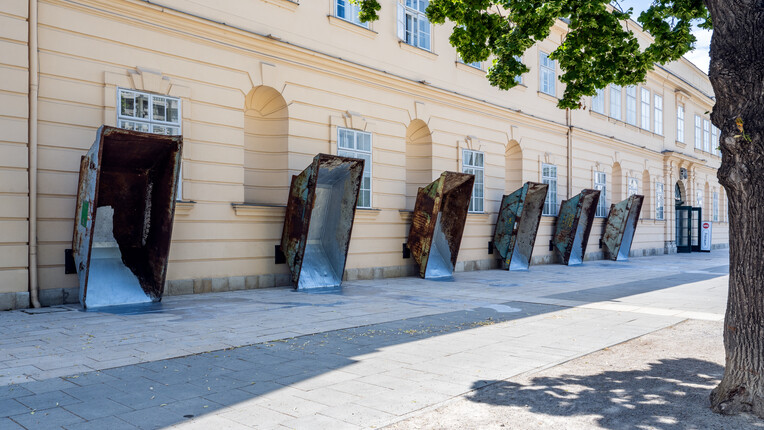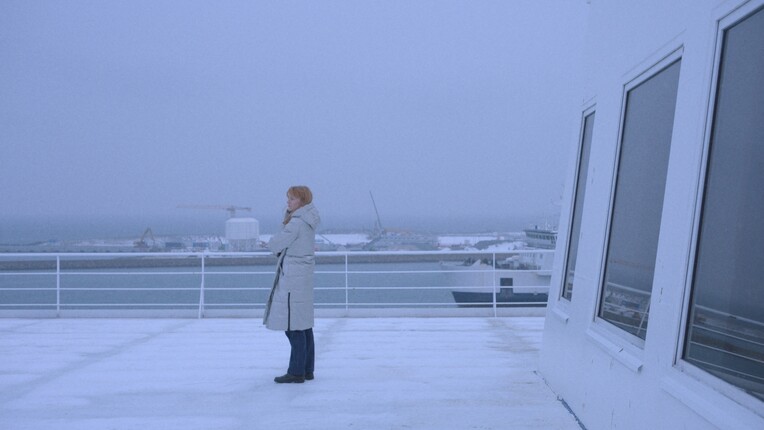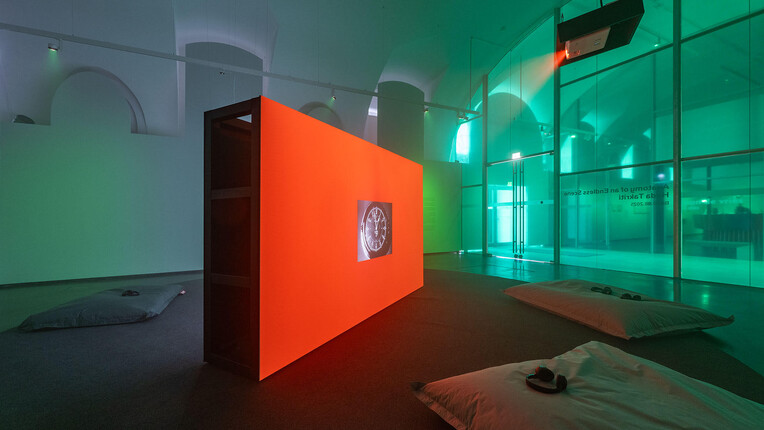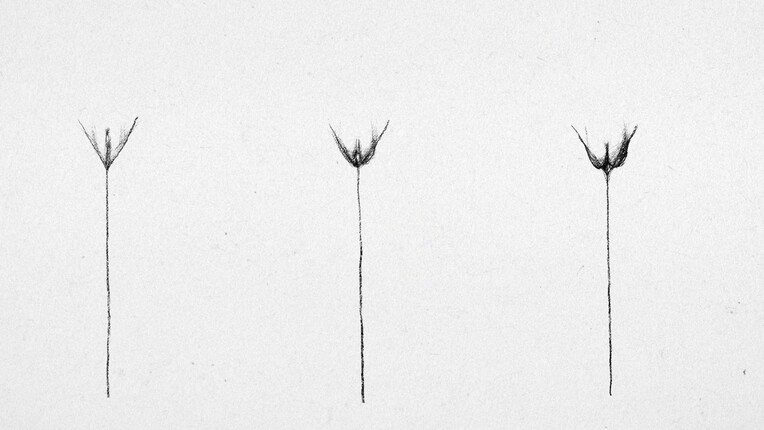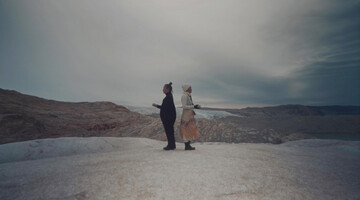
“Give space and microphones to communities, and don’t talk for them.”
As part of the exhibition "Overground Resistance" at frei_raum Q21 exhibition space, Aka Niviâna - poet and climate activist from Greenland - presents the poetic video work "Rise: From One Island to Another" that was realized in collaboration with artist and activist from the Marshall Islands Kathy Jetñil-Kijiner.
This conversation between Aka Niviâna and Oliver Ressler presented here in shortened and edited form, took place around the conference “Barricading the Ice Sheets” at Camera Austria in Graz in February 2020.
Oliver Ressler: Please introduce yourself and explain how you and your poetry connect to the climate justice movement.
Aka Niviâna: My name is Aka Niviâna, I am 25. I am a writer, a poet, a lyricist. I started becoming aware of the climate crisis and became a part of the movement around 5-6 years back. I had a speech in Copenhagen in 2017 and I realized that I could communicate to people with words through poetry and art in a way that I couldn't through essays and articles – I did that before that and I did not really feel reaction. So I changed strategies and I tried to approach it more poetically. I learned the power of words and I also learned a lot through the opportunities to speak in different places.
At the beginning of this awareness around our planet and the crisis I did not really know much about what was going on. I knew about the ice melting in my homeland Greenland and the knowledge that has been passed down through history's stories and myths. And I think this consciousness was always there somehow, because we were taught from the very beginning about for example Mother of the Sea/Sassuma Arnaa, which is basically a story about how, if you pollute the oceans, you will get in trouble! And there are other stories like this. So I do poetry, because that is the best way for me to communicate with people – and that is the strength that I have!
Oliver Ressler: Could you talk about what activists' practices in Greenland look like – I guess it is very different from activism in larger cities in Europe or the rest of the world?
Aka Niviâna: Every time you have to bring awareness to a certain issue I feel like in Greenland it is the artists who communicate this. A big part of our culture is music and when there is a gathering, they play music or sing. We had a revolution around 40 years ago, where we were trying to gain more independence from Denmark and there was just a huge reaction and it was something everybody knew about. The power of music was central. Also, to give some context: Greenland is the biggest island on earth and it is a huge territory. But we are only 56,000 people on this huge area. So, in theory it should be easier to communicate different ideas, establish movements and stuff like that. Art really has a central part when struggling for social change.
Oliver Ressler: What are central aspects when addressing climate breakdown and the necessity of a radical transformation of society from your point of view?
Aka Niviâna: The most important is to give space and voice to people who are marginalized and never heard. I think that we need new input, not just in the climate movement, but in every issue that intersects with the climate crisis. Give space and microphones to communities, and don’t talk for certain communities. I think every human being with an issue that she would like to share needs to bring that forward herself.
Oliver Ressler: This is a question on the use of language: In the northern countries, where winters are cold, for some people the term “global warming” may sound like a reference to something pleasant and desirable.
Are there any suggestions concerning the replacement of this term or about the power of language in relation to climate disruption in general?
Aka Niviâna: I use the words “the climate crisis” or “climate emergency”, “climate change”. In relation to Greenland “global warming” is a very obvious expression to use, because the ice is melting, our landscape is changing. But I think it is important to be aware of the terms that you use. Because you cannot stop the melting of ice, people try to be optimistic about the changing of the landscape. So, can we use this for something else? One aspect is that with all the ice melting we get access to a lot of mountains, which were never accessible before. And this could be a good thing if all the resources were used either to help the Greenlandic people in an economic sense or to generate sustainable energy. But unfortunately I don’t think that’s going to be the case.
Oliver Ressler: Can you talk about negative consequences the melting of the ice has locally, for indigenous neighborhoods in Greenland?
Aka Niviâna: Polar bears are coming to the cities, they are hungry, there are a lot of polar bears. The problem is, there is not enough food for them. And the routes they had used on the ice have changed too. So, they are hungry and come to the cities. A polar bear is a three-meter predator. And no matter how well-meaning we are – of course, they should not starve, they should not go extinct – but, if a polar bear comes to the village, you have to shoot it. It is you or the bear. The ecosystem is changing, the animals, the life in the ocean. And of course, there is extreme weather.
Oliver Ressler: Where can we glimpse potential futures and new worlds grounded in social justice and ecological flourishing, and how can these be cultivated through creative aesthetic practices?
Aka Niviâna: We need to make art accessible! Make it something that we all have a say in forming and changing and not make it an elitist institution. For so long reality has been formed by few people who have the power to speak and to be heard. It is important to let people speak for themselves. I think it is a really important point, because the people mentioned in narratives are often totally different from the perception of them. As a Greenlandic woman I know we had a lot of people coming, making documentaries: “Look at these poor Greenlandic people!” Well, you know, this observing thing. When people speak for themselves, this also goes against the mystification. If you think about indigenous people, people often distance themselves from indigenous peoples, because they are said to have this mythic, mystic understanding of what it means to be part of nature. In reality we are all part of nature. I just think that we need new ways of communicating.
Oliver Ressler: Jay Jordan brought up the notion of the “extractivist artist” or “art”. Is an activist art extractivist, if it takes place in an art institutional context?
Aka Niviâna: I think if you as an artist with genuine good intentions become part of an institution with the will to make a change, you also have to be there and infiltrate those spaces. So, I think intention is everything.
